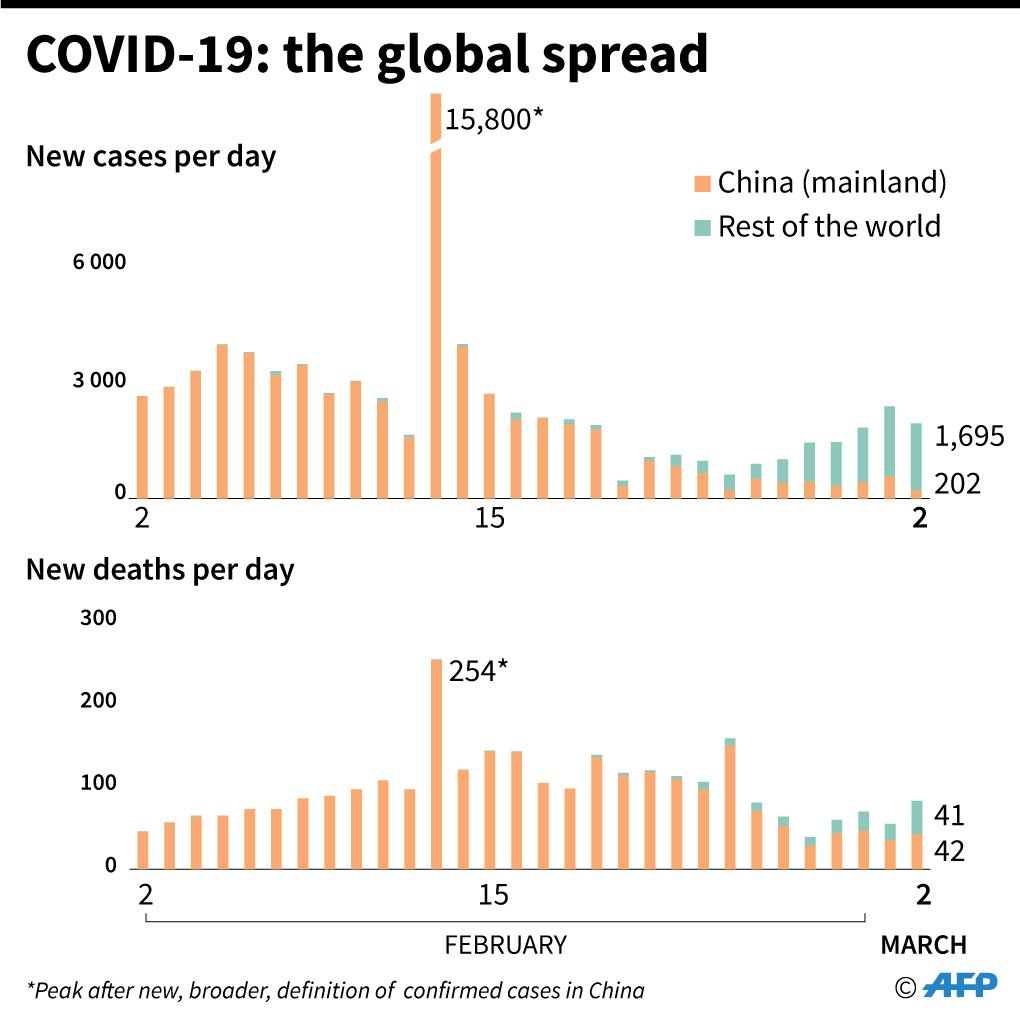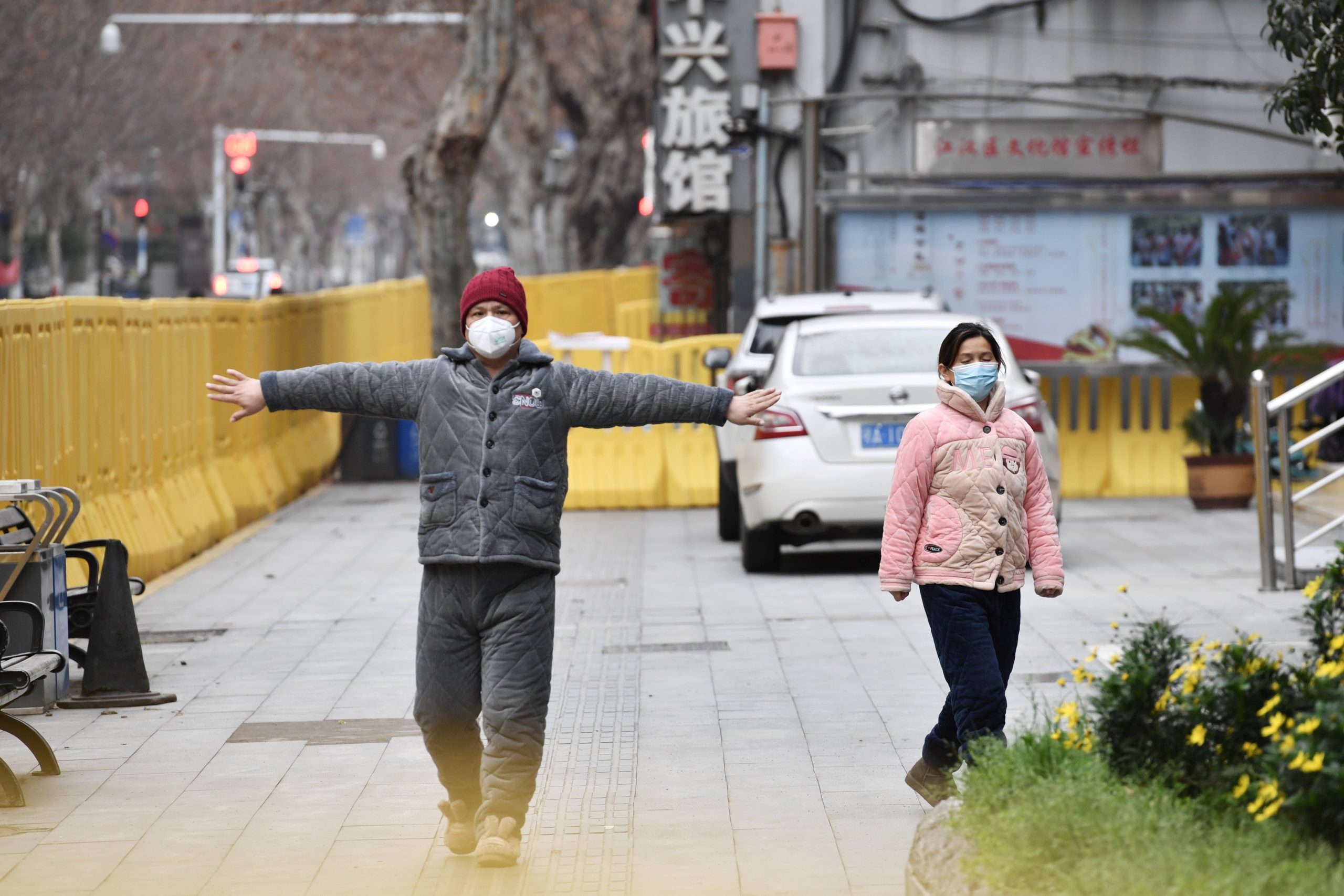While the coronavirus epidemic has spread rapidly across borders, China, the epicenter of the disease, began worrying about importing infections and reported an increase on Tuesday in cases of the new coronavirus coming from abroad.
The new coronavirus jumped from an unknown animal species to the human population in China’s city of Wuhan at some point in December and has since spread globally. Outside China, the virus has spread to at least 73 countries, with more than 3,000 people dead and 10,000 infected. South Korea, Italy and Iran have emerged as major COVID-19 hotspots.
Since the World Health Organization (WHO) declared the accelerating outbreak a global emergency on Jan. 30, the virus has continued to make its way across the globe. The Geneva-based WHO warned that the world has entered uncharted territory in its battle against the deadly coronavirus. “We have never before seen a respiratory pathogen that is capable of community transmission, but which can also be contained with the right measures,” WHO chief Tedros Adhanom Ghebreyesus said Monday.

China has confirmed 13 imported infections, including eight Chinese nationals who worked at the same restaurant in northern Italy’s Lombardy region. Beijing, Shanghai and Guangdong province are imposing 14-day quarantines on people arriving from countries with a severe epidemic. China’s National Health Commission counted 125 new coronavirus cases in the past day, the lowest number since January 20. Meanwhile, there were 31 new deaths from the disease, bringing up the country’s death toll to 2,943 with 80,151 infections.
South Korea, the biggest cluster outside China, reported 851 new cases, its biggest daily increase, sending its total past 5,000 while its death toll rose to 28.
Europe’s worst novel coronavirus crisis in Italy, with contagions concentrated in the northern regions of Lombardy and Veneto.
Iran has the highest number of deaths from the coronavirus outside China, where the outbreak began. Experts worry Iran’s percentage of deaths to infections, now around 3.3%, is much higher than other countries, suggesting the number of infections in Iran may be far greater than current figures show. Iran stands alone in how the virus has affected its government, even compared to hard-hit China, the epicenter of the outbreak.
Iran orders army to fight virus
Iran’s supreme leader put the Islamic Republic’s armed forces on alert Tuesday to assist health officials in combating the outbreak of the new coronavirus. The death of Expediency Council member Mohammad Mirmohammadi on Monday makes him the highest-ranking official within Iran’s leadership to be killed by the virus. State media referred to him as a confidant of Khamenei. The virus earlier killed Hadi Khosroshahi, Iran’s former ambassador to the Vatican, as well as a recently elected member of parliament. Those sick include Vice President Masoumeh Ebtekar, better known as “Sister Mary,” the English-speaking spokeswoman for the students who seized the U.S. Embassy in Tehran in 1979 and sparked the 444-day hostage crisis, state media reported. Also sick is Iraj Harirchi, the head of an Iranian government task force on the coronavirus who tried to downplay the virus before falling ill. On Tuesday, lawmaker Abdolreza Mesri told Iranian state television’s Young Journalists Club program that 23 members of parliament had the coronavirus. He urged all lawmakers to avoid the public.
In the Gulf region, there have been over 2,530 cases of the virus, mostly in Iran where 77 people have died. Several countries in the region have reported coronavirus infections in people who have visited Iran. Qatar announced one new case on Tuesday, bringing the total to eight.
In Europe, the number of confirmed coronavirus cases in Britain has risen to 51, health minister Matt Hancock said on Tuesday, up from 39 the previous day. Prime Minister Boris Johnson warned the death toll was “highly likely” to increase. Earlier, the government unveiled its “battle plan” to tackle the spread of coronavirus, warning that as many as a fifths of employees could be off work at the peak of the outbreak.
UK health officials say that in the worst-case scenario, 80% of the population could become infected with the coronavirus. Evidence from China suggests a mortality rate of one percent, pointing to up to 500,000 deaths in Britain. However, this includes many variables and Chief Medical Office Chris Whitty said predicting numbers was “largely speculative.” The risk was highest for elderly people and those with underlying health conditions. Children appear to be less affected than other groups, he added.










Discussion about this post